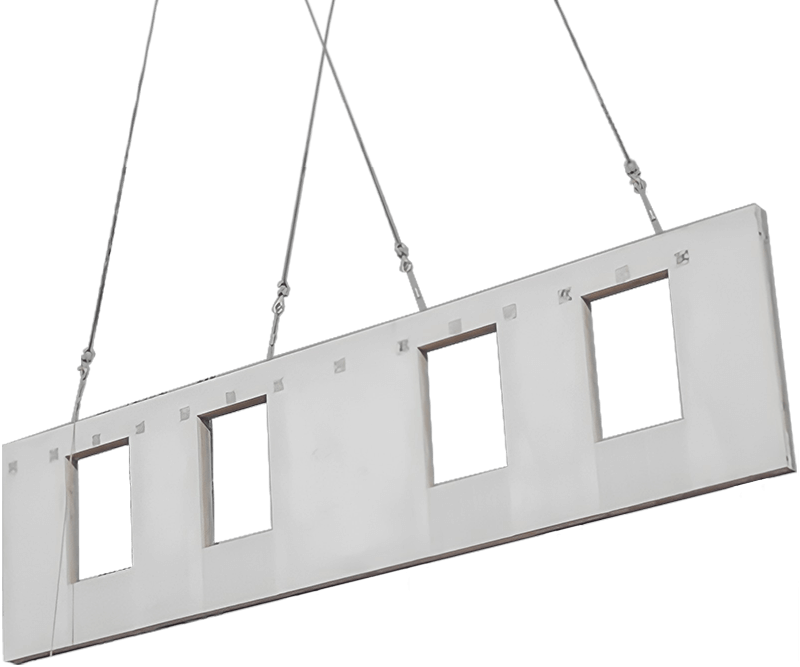By Matt Cooper, Engineering Manager

As we celebrate Earth Day this month, I’m reminded of the value of sustainability and resiliency as it relates not only to our precast concrete products, but more importantly, to our family and friends, our community, our country, and our world.
Here are just a few ways precast/prestressed concrete construction is providing a positive outlook for our planet.
We Give More Than We Take
Precast/prestressed concrete uses less material overall than cast-in-place construction. Precast is incredibly durable, so we can build more using less.
For insulated wall panels, precast concrete’s high thermal performance enables us to build thinner walls that require less insulation than with other building materials. And with precast concrete’s aesthetic versatility, it can even be used as finished interior and exterior walls, a popular and trendy option in multifamily and student housing construction.
This can potentially reduce the need for additional materials such as paint, studs, and drywall. By using less materials to provide more efficient structures, precast takes less and gives more back to our communities.
We Stay Future Focused
As a leading construction company, it’s critical to be mindful of how today’s tasks impact tomorrow’s terrain. If we’re building lots of structures but burning through our natural resources, that’s not sustainable.
The precast/prestressed industry focuses on improving our methods, resulting in new technologies to advance the industry and make construction more efficient for tomorrow. And resiliency is key in this conservation conversation.
Precast/prestressed concrete products are incredibly resilient. Precast concrete safeguards existing resources. For instance, concrete has a higher fire resistance than many other building materials.
For durability of exterior facades, prestressed concrete products offer 5000 psi or greater. This means when we design and build a structure, from concept to construction, Metromont is mindful of creating a sustainable, resilient product that lasts longer, uses less, and is strong enough to protect lives and our planet.
With precast, engineers and earth-conscience companies mitigate future quality of life based on current construction. And the precast concrete industry is constantly looking for ways to make construction materials more sustainable.
Simply put, precast is built to last longer. Resilient during extreme weather and resistant to fire, precast structures for business, education, entertainment, and living produce a return on investment that can outpace consumption.
We Reduce Energy Consumption
The high degree of thermal mass in concrete means our buildings are less susceptible to temperature swings and retain energy for a longer period. This means buildings stay warmer in the winter and cooler in the summer, without as much need for additional non-renewable energy sources.
Another cool thing about concrete is that we can apply techniques that reduce energy consumption. For example, using a particular slag or white cement to lighten the color of a wall can increase the building’s solar reflectivity index (SRI), allowing it to reject greater amounts of heat absorption.
Not only does this help save the planet, but it also certainly saves building owners and occupants money on energy bills.
We Source Locally
At Metromont, we source our materials locally whenever we can.
By harvesting natural resources from local suppliers, not only do we create structures that complement the landscapes of our neighborhoods, we also help regional economic growth by putting revenue back into these communities.
This is not only helpful to businesses, but it also aids sustainable construction. Locally sourced materials mean shorter hauling distances, less fuel consumption, reduced energy requirements, and less wear and tear on our roads and highways.
We Make A Smaller Footprint
Prestressed concrete construction can span far.
Wood structures are limited in allowable height by the Building Code and when they cannot go upward, they must go outward.
Using prestressed concrete means buildings such as offices and multi-family units can be built taller, thus taking up a smaller footprint, while still providing optimal occupancy for the owners.
We Reduce. Reuse. Recycle.
Because the majority of the elements in concrete come from natural resources, the majority of it can be returned to the earth.
It’s common for deconstructed concrete structures to be used for other purposes. Reinforcement materials can be extracted, and steel can be recycled. Ground up concrete is often used for gravel roads or other purposes.
For the structures still suitable for use, those made of precast concrete are highly adaptable. Precast pieces can be designed with the ability to enable building expansion and reconfiguration to suit new demands. Fifty-year-old precast concrete warehouses can be converted into office buildings, all while maintaining the integrity of the structures that protect lives.
As we consider being more sustainable, it’s important to remember that every construction method pulls from natural resources. To say that construction is destructive to our world is counterproductive because everyone needs structures to live, work, and play.
There are many exciting things happening in the construction industry. At Metromont we continue to focus on finding the most efficient solutions that use fewer natural resources in order to continue minimizing our environmental impact while maximizing the protection of our most valuable resource … human life.
About Matt Cooper:
Matt Cooper graduated from Old Dominion University with a B.S. in civil engineering from the school of engineering technology. He joined Shockey Precast in 2004 and made engineering manager in 2006. He is a professional engineer in multiple states. Matt is a voting member on the following committees for the Precast Concrete Institute (PCI): Architectural Precast Concrete, Blast Resistance and Structural Integrity, Industry Handbook, and Leadership PCI. He graduated from the Leadership PCI program in 2008. Matt also served on the committee developing the American Society of Civil Engineers’ ASCE/SEI 76-XX Standard for Mitigation of Disproportionate Collapse Potential in Buildings and Other Structures. Matt is married and he and his wife have seven children together.




